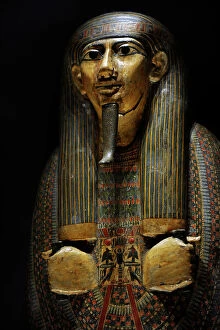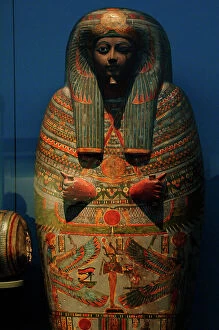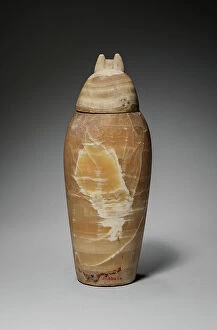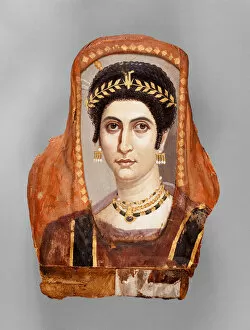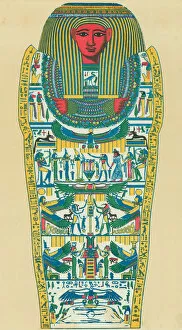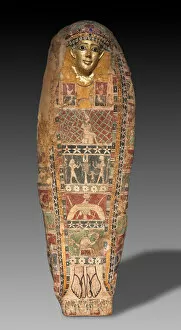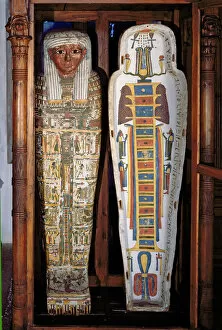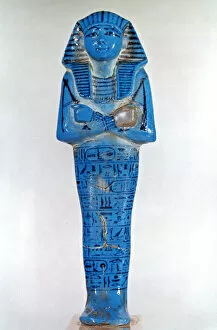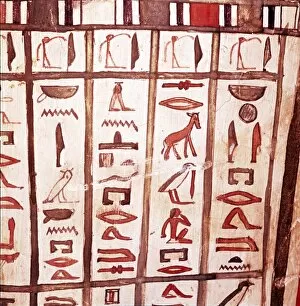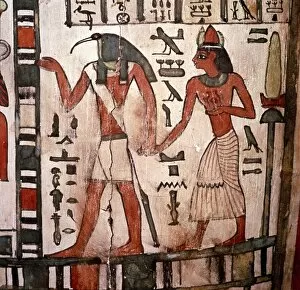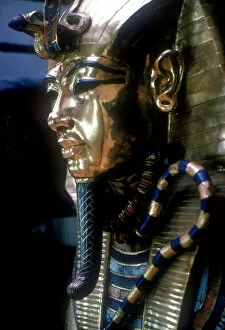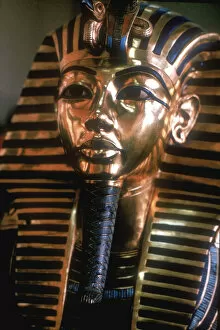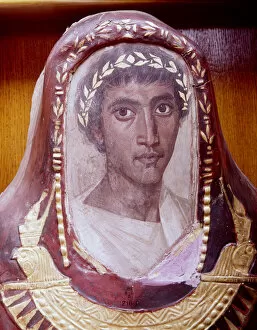Mummy Case Collection
Step back in time and unravel the mysteries of ancient Egypt with these captivating mummy cases
For sale as Licensed Images
Choose your image, Select your licence and Download the media
Step back in time and unravel the mysteries of ancient Egypt with these captivating mummy cases. Each intricately crafted coffin tells a unique story, preserving the memories and beliefs of a bygone era. One such masterpiece is the Coffin of Khonsu-hotep, a stunning painted wood creation from the 21st-22nd Dynasty. Its vibrant colors and detailed hieroglyphics transport us to an era that dates back to the 10th century BC. This exquisite piece showcases the craftsmanship and artistic prowess of ancient Egyptian artisans. Another fascinating artifact is the Fish mummy from Egypt's Late Period. This peculiar object highlights the Egyptians' reverence for all forms of life, even extending it to fish. It serves as a reminder that their culture embraced every aspect of existence, no matter how small or seemingly insignificant. The Ouchebti statuette offers insight into Egyptian funerary practices. These miniature sculptures were placed in tombs to serve their owners in the afterlife, performing tasks on their behalf. The attention to detail in these figurines reflects not only religious beliefs but also societal values surrounding death and burial rituals. Moving on to coffins, we encounter another remarkable find –the Coffin of Khonsu-hotep (Det). Similar to its predecessor mentioned earlier, this painted wooden coffin captivates with its intricate designs and symbolic imagery. It stands as a testament to both artistic skill and spiritual devotion during this period. Delving deeper into mortuary customs, we come across an anthropoid coffin containing the mummy of a priest named Mnotu from Deir el Bahari. Made from painted plaster, linen, and wood; this elaborate creation showcases how Egyptians sought eternal rest for their loved ones through carefully constructed burial chambers adorned with sacred symbols. The Statue of Ptah Sokar Osiris represents yet another intriguing aspect - divine worship during late antiquity in Egypt.

